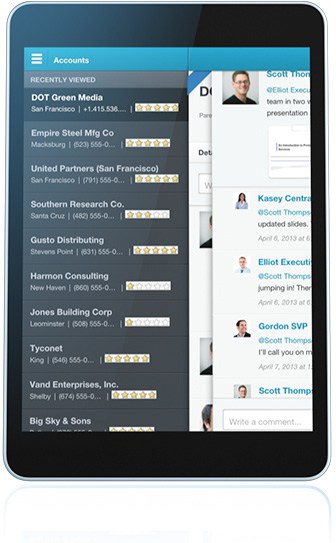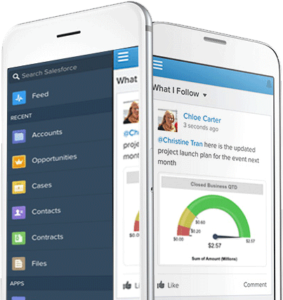What is “the cloud”?
Moving to the cloud. Running in the cloud. Stored in the cloud. Accessed from the cloud: these days is seems like everything is happening “in the cloud”. But what exactly is this nebulous concept?
The short answer is that it’s somewhere at the other end of your internet connection – a place where you can access apps and services, and where your data can be stored securely. The cloud is a big deal for three reasons:
- It doesn’t need any effort on your part to maintain or manage it.
- It’s effectively infinite in size, so you don’t need to worry about it running out of capacity.
- You can access cloud-based applications and services from anywhere – all you need is a device with an Internet connection.
That’s important because there’s a shift going on from office-based work to working on the move. This shift is reflected in computer hardware sales: in 2015 about 270 million desktop and laptop computers will be sold, compared to 325 million tablets and almost 2 billion smartphones.
That makes the cloud a very good place to run business software like customer relationship management (CRM) applications – software that users need to access reliably at any time, wherever they are, and on any device.
History of Cloud Computing
The Internet has its roots in the 1960s, but it wasn’t until the early 1990s that it had any relevance for businesses. The World Wide Web was born in 1991, and in 1993 a web browser called Mosaic was released that allowed users to view web pages that inc luded graphics as well as text. This heralded the first company web sites – and not surprisingly, most of these belonged to companies involved in computing and technology.
luded graphics as well as text. This heralded the first company web sites – and not surprisingly, most of these belonged to companies involved in computing and technology.
As Internet connections got faster and more reliable, a new type of company called an Application Service Provider or ASP started to appear. ASPs took existing business applications and ran them for their customers. The ASP would buy the computing hardware and keeping the application running, and the customer would pay a monthly fee to access it over the Internet.
But it wasn’t until right at the end of the 1990s that cloud computing as we know it today appeared. That’s when salesforce.com introduced its own multi-tenant application which was specifically designed:
- to run “in the cloud”;
- to be accessed over the Internet from a web browser;
- to be used by large numbers of customers simultaneously at low cost.
Since then the cloud has grown and grown: in 2013 worldwide spending on cloud services ran to an estimated $47 billion. And that’s set to more than double to over $108 billion by 2017 as companies invest in cloud services as the foundation for new, competitive offerings.
How cloud computing works
With a cloud app, you just open a browser, log in, and start working.
That means a field sales representative using cloud-based CRM can get all the information they need from their mobile d
And this all happens without any hardware to buy and manage, or software to install and update. That’s because the hardware and software required is all the responsibility of the cloud company that runs the app. Companies such as salesforce.com have years of experience managing their cloud infrastructure and making sure that it’s secure and reliable so that you don’t have to.
You can run all kinds of apps in the cloud:
 processes on App Cloud.
processes on App Cloud.- Create and collaborate on documents and spreadsheets with Google Apps fo
- r Business;
- Video conference with your colleagues on Skype;
- Manage your Sales & Customer Service functions, alongside other key business
- You can even build your own social, mobile and real-time employee apps and run them in the cloud. The latest innovations in cloud computing are making business applications even more mobile and collaborative.
If you’re a Facebook or Twitter user you’ve probably come to expect relevant information pushed to you in real time; business applications like Sales Cloud are heading in that direction as well.
Need help? Ask a question on an enterprise social network like Salesforce Chatter and others in the company can jump in with the information you’re after.

Social CRM in the cloud
If you’re a Facebook or Twitter user you’ve probably come to expect relevant information pushed to you in real time; business applications like Sales Cloud are heading in that direction as well.
Need help? Ask a question to our Expert .
Who uses the cloud?
Without the cloud, life would be very different. It’s become so integral to our everyday lives that most people use it without even realising. In fact for many people life without the cloud would be uunthinkable: without it there would be no Facebook, no Twitter, no Gmail, and no Spotify.
The cloud has transformed the business landscape too. Today millions of organisations around the world rely on cloud services for everything from document creation and backup to social CRM and accounts, and just about every application imaginable in between:thinkable: without it there would be no Facebook, no Twitter, no Gmail, and no Spotify.
- Companies with over 25,000 employees use an average of 545 cloud apps or services;
- Over 1.2 billion people around the world use Facebook;
- Over half of all Internet users rely on cloud-based email services like Gmail and Yahoo! Mail to send and receive their messages.








 our existing business applications have a cloud capability – from office productivity to
our existing business applications have a cloud capability – from office productivity to
Comments are closed